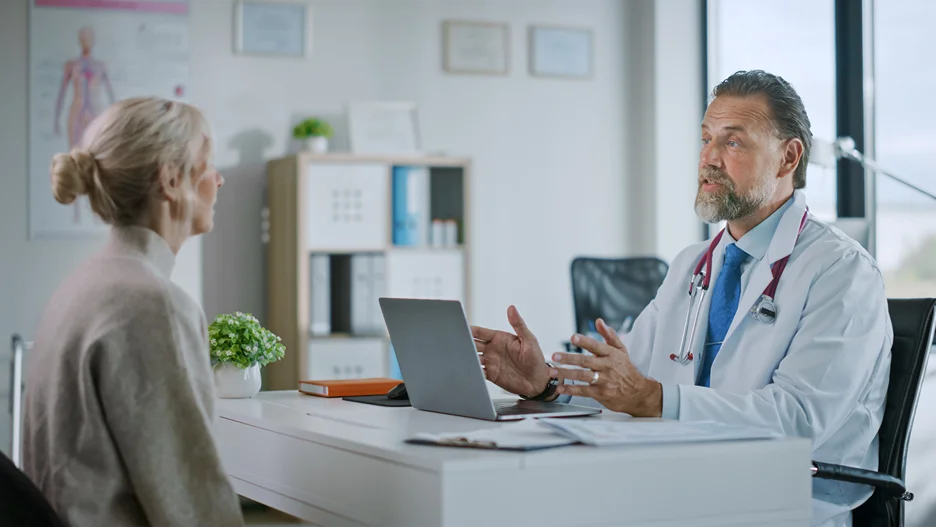EHRs improve communication in healthcare by providing a centralized digital platform that facilitates seamless information sharing between providers, patients, and healthcare settings.
Smooth and seamless communication is the lifeblood of effective healthcare. From coordinating care between different providers to keeping patients informed about their health, clear and efficient sharing of information is essential. This is where electronic health records (EHRs) can make a major impact.
Implementing EHR systems has the potential to greatly enhance communication for healthcare organizations across the board. But realizing these benefits depends on choosing the right system, proper training, and putting patients at the center of the process.
First, it’s helpful to understand exactly what we mean by “EHR.” EHR stands for electronic health record and refers to the comprehensive digital record of a patient’s health data across multiple care settings. This includes medical history, diagnoses, medications, immunizations, test results, and more.
EHRs differ from EMRs (electronic medical records) in their scope. EMRs are digital records specific to one healthcare organization. So a single doctor’s office may have its EMR system for medical data related only to that practice. EHRs pull together the full health record from multiple sources into one integrated system.
Both EMRs and EHRs offer tools to enhance clinical workflow and communication compared to paper records. But EHRs provide the complete patient story, facilitating seamless information sharing between various providers.

One of the biggest communication challenges in healthcare is coordinating care across a patient’s whole care team. This team may include primary care doctors, specialists, nurses, physical therapists, social workers, and other providers. Crucial health details often fell through the cracks with paper records and faxed documents. EHRs offer several ways to streamline provider-to-provider communication:
All providers authorized to view a patient’s EHR can immediately see up-to-date information entered by other team members. Lab results, specialist reports, and new medication orders populate the record in real-time. This mitigates the game of “phone tag” between offices chasing down needed patient info.
EHR systems include built-in messaging functionality as a quick way to communicate with other providers. Messages become part of the patient record and avoid the security risks of consumer email services.
The EHR referral management tools allow providers to electronically send and track referrals or specialty consultation requests. This facilitates getting patients needed appointments faster and specialists can easily view the patient’s full record.
Seeing the full medication list and prescription history from within the EHR allows providers to coordinate prescriptions and reduce risks of adverse drug interactions.
This real-time, shared access is especially critical for transitions between care settings. For example, when a patient is discharged from the hospital, their primary care doctor immediately sees the hospitalization details, discharge instructions, new prescriptions, and follow up needs. This continuity of information facilities coordinated care.
In addition to improving inter-provider communication, EHRs also enhance how healthcare teams connect directly with patients:
Portals allow patients 24/7 access to their personal health records. They can view test results, upcoming appointments, immunization records, and more. Many portals also allow patients to directly message their providers.
Patients don’t need to wait for a provider visit to view their information or send a message. Providers can also communicate with patients outside of visits (e.g. sending reminders about needed follow-up tests).
Many EHR portals enable online appointment scheduling. Patients can book at their convenience without waiting on hold during clinic hours.
Portals may offer integrated patient education resources. Providers can push educational materials related to diagnoses, medications, and treatment plans directly to the patient’s portal.
This transparency supports patients taking an active role in their care and strengthens the patient-provider relationship.
Fragmentation between healthcare organizations has long hindered coordinated, team-based care. Traditionally, sending records via fax or CD-ROM when patients transitioned between settings often led to gaps in care. However, modern advancements have significantly improved communication possibilities.
EHRs can enhance cross-setting communication, with interoperability (the ability to exchange computable data) being crucial. Standards like Fast Healthcare Interoperability Resources (FHIR) are advancing data-sharing capabilities, and other modern tools like Health Information Exchanges (HIEs) and secure messaging facilitate information exchange.
Here are some examples of how EHRs streamline communication:
When patients move between care settings (like hospital to rehab facility to home), EHR data transfer prevents information gaps. For example, discharge summaries from the hospital populate right into the primary care EHR to facilitate smooth follow-up.
ER doctors can access the patient's full medical history even if they're unconscious or unable to communicate, allowing for better diagnosis and treatment in emergencies.
EHRs can facilitate real-time reporting of infectious diseases and tracking of disease outbreaks when connected to public health agencies.
Overall, this interoperability enables true care team collaboration, leading to more coordinated treatment plans and better health outcomes.

Numerous studies demonstrate the benefits of EHRs on healthcare communication and related outcomes:
The evidence strongly supports EHRs' potential to connect healthcare teams and patients when thoughtfully implemented.
While EHR adoption continues to climb, implementation challenges can hamper realizing the full communication potential. Here are some best practices to maximize EHR communication capabilities:
Effective change management ensures your organization gets the most from the EHR communication tools.
While EHRs offer major communication advances, being aware of potential challenges and proactively addressing them is important:
| Challenge | Potential Limitations | Mitigation Strategies |
| Privacy Concerns | Sensitive health information in EHRs raises privacy risks if not carefully managed. | Implement strong access controls and granular permissions to protect patient data within the EHR. Staff should undergo thorough training on HIPAA compliance and ethical data sharing practices. Additionally, patients should be educated about their privacy rights and how their data is utilized. |
| Information Overload | Excessive notifications and messages within the EHR can overwhelm providers. | Customize alert settings within the EHR to highlight and prioritize critical information, reducing the risk of information overload. Training for staff on effective inbox management and prioritization techniques is also crucial. |
| Patient Portal Access Disparities | Digital literacy barriers and technology access gaps can limit patient portal use, especially among older adults or disadvantaged populations. | To mitigate access disparities, offer tutorials on using the patient portal, which can be delivered in person or via phone. Provide educational materials in multiple languages and formats that are easy to understand. Explore options for assisted access, such as allowing family members designated access to the portal. |
| Interoperability Gaps | Seamless data exchange between different EHR systems remains an evolving area. | Encourage the adoption of interoperability standards across the industry, such as FHIR, to facilitate better data exchange. Engage in regional Health Information Exchanges (HIEs) to enhance connectivity. Choose EHR systems with robust interoperability features. |
When thoughtfully implemented, EHRs show immense potential to improve communication efficiency across the healthcare ecosystem. But technology alone is not the answer. Optimizing use of EHR communication tools while keeping patient needs at the center enables healthcare teams to fully realize the benefits. Smoother information exchange ultimately leads to more informed decision-making and better-coordinated care for patients. That’s a win-win for all.